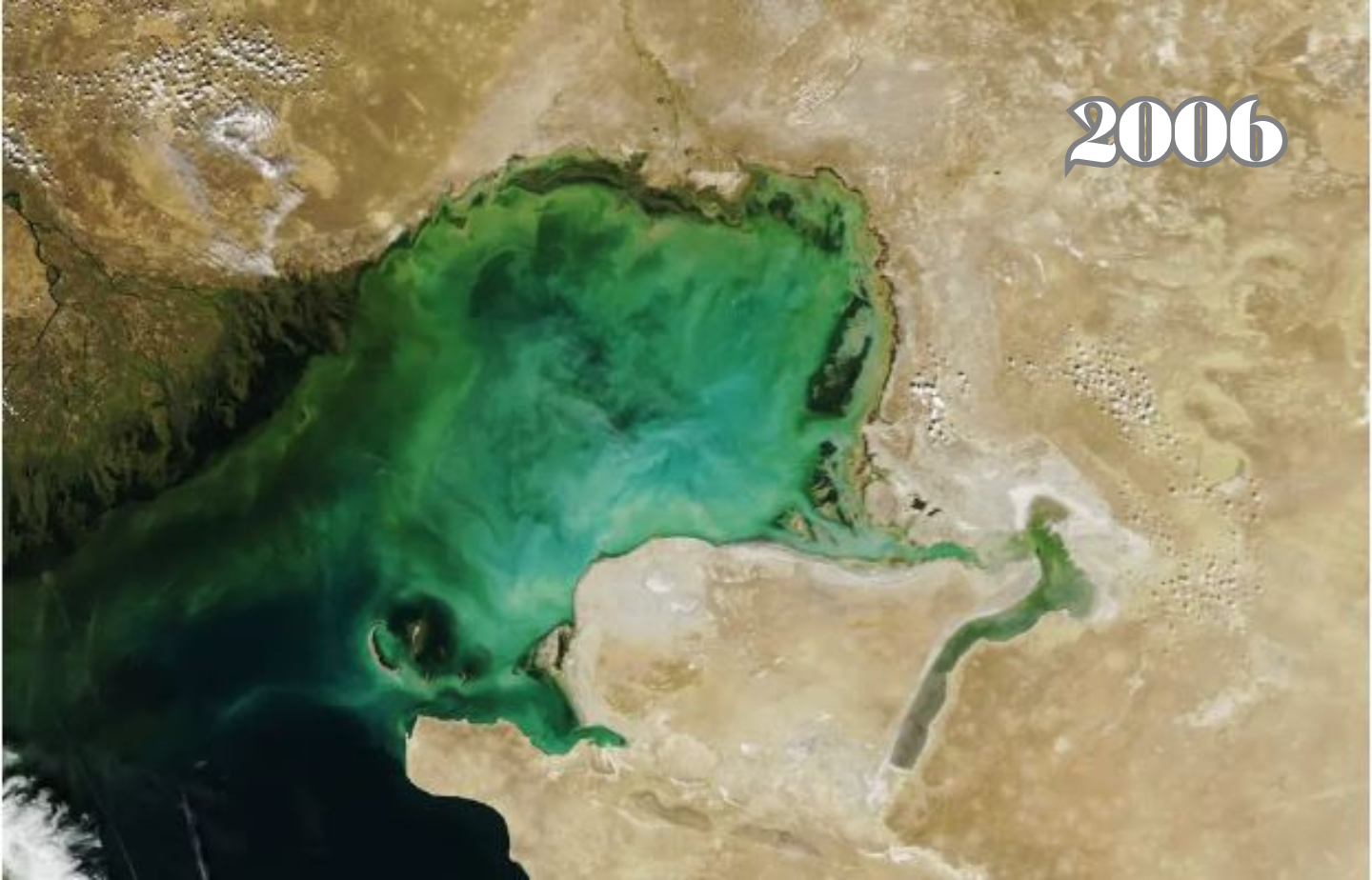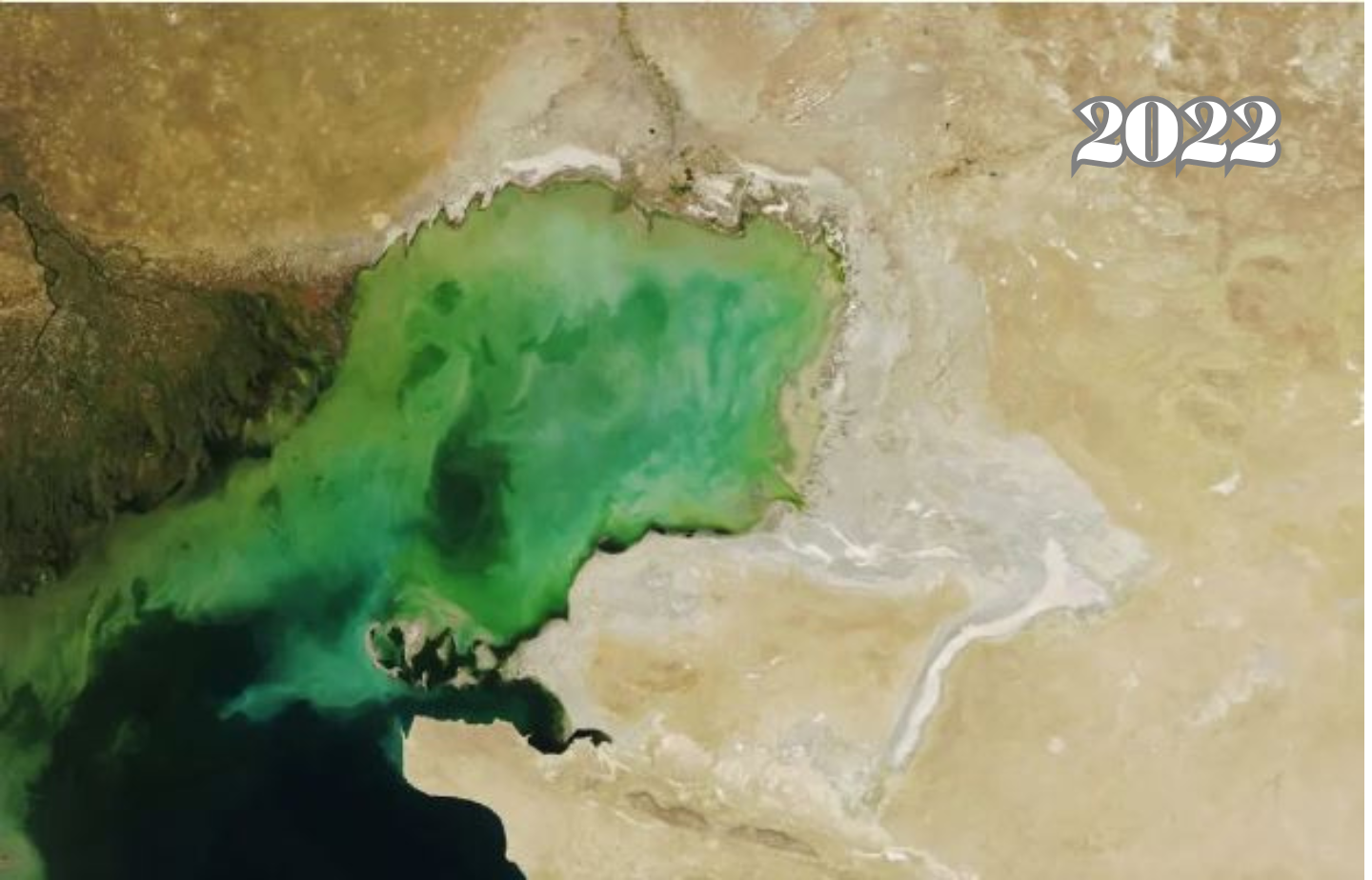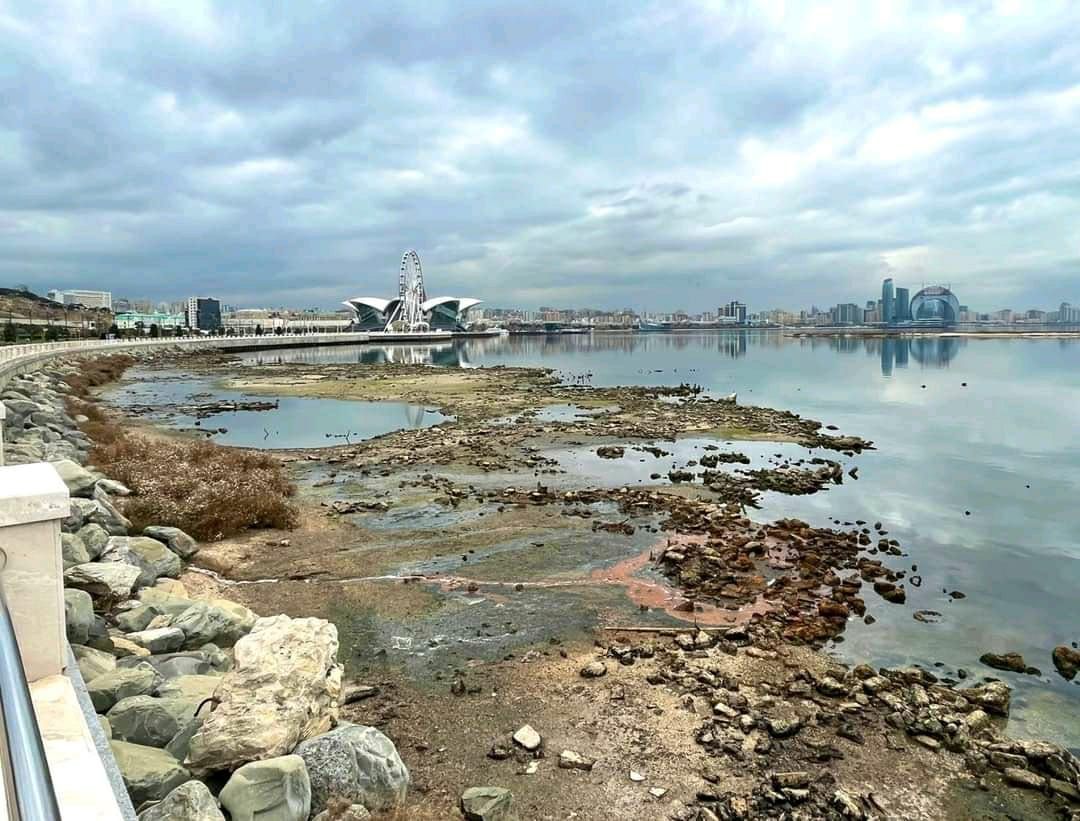|
|
TODAY.AZ / Society
Caspian Sea coastal retreat alarms about new environmental threats
05 April 2024 [15:33] - TODAY.AZ

The Caspian Sea, the largest inland body of water shared by Iran, Russia, Azerbaijan, Kazakhstan, and Turkmenistan, faces decreasing water levels. Some scientific reports suggest it could drop by 9 to 18 metres by the century's end, potentially losing a quarter of its area and uncovering around 93,000 square kilometres of dry land, similar in size to Portugal.


In order to investigate the reasons for the decrease in the water level in the Caspian Sea, it is necessary to first look at the rivers that feed this giant lake. Russia's construction of dams on the Volga River, the primary water source for the Caspian, has significantly reduced water flow into the sea.
For example, Dubna is a small town three hours from Moscow by train that sits on the banks of the Ivankovo Reservoir, the first part of a massive hydropower project called “Big Volga,” whose construction spanned decades during the Soviet era. The complex, consisting of 11 dams on the Volga and its largest tributary, the Kama, is responsible for about 5% of the total electricity production in Russia.
When the station in Dubna was designed in the early 1930s, the young Soviet state had just decided to catch up with the capitalist states of the West by rapidly accelerating its industrial development—but in order to do so, it needed to generate energy on a massive scale. By the time the last station was built, in the 1980s, the Soviet Union, having just hosted the Olympics for the first time, was about to launch perestroika, a program of large-scale democratic reforms intended to end an era of stagnation and revitalise the flailing state. The history of the Big Volga project is, in a sense, the history of Soviet industrialization. It is also a history of rivalry with the US, which, for decades, raced the Soviets to build bigger, more impressive dams.
The river has become polluted, silted up, and overwhelmed by invasive species. Water flows at a tenth of the speed it did before the dams were constructed, according to estimates by researchers at the Institute of Ecology of the Volga River Basin in the central Russian port city of Togliatti. Widespread toxic algal blooms are now common.
After the Soviet Union’s collapse, the newly formed Russian government was left trying to fix the Soviet machine. The federal Volga Revival program, a conservation and restoration effort launched in 1996, met its demise just two years later, during a bout of deep economic crisis and government turmoil. Water quality in the Volga hasn’t improved substantially over the last three decades.
Geopolitical tensions and sanctions have also driven Russia to intensify the use of Volga water resources for agriculture, exacerbating the decline. It is telling that the Volga’s water has been put to use to provide for the Russian capital. It no longer belongs to the people along the Volga.
The change in the water level of the Caspian Sea poses a threat to the surrounding areas. If the water level declines further, there is a threat to the unique biodiversity of the water body. Drastic changes in the water level of the Caspian Sea would cause not only environmental consequences but also socio-economic ones, such as damage to coastal enterprises, loss of livelihoods, migration, and infrastructure degradation. The higher the rate of oscillation, the worse these consequences would be. Therefore, it is important to conduct research aimed at discovering the main reasons affecting the Caspian Sea level and constructing models that would provide reliable forecasts in order to prevent potential damage.
In addition, the decrease in Caspian waters is clearly observed along the eastern strip of Azerbaijan and especially in the area of Baku Boulevard. The receding waters near the boulevard made it impossible for even cruise ships to approach the shore.

Azerbaijani ecologists also associate this with global warming, and it is noted that this situation may have a negative impact on the country's climate and seismic processes in the future.
Currently, the National Adaptation Plan (NAP) support project for adaptation is being implemented in Azerbaijan. The priority sectors were identified as water, agriculture, and coastal areas. The expected increase in extreme events on the Caspian Sea coastal areas, such as extremely high waves, strong winds, and flooding, makes those areas particularly vulnerable to climate change and requires the development of targeted adaptation programs.
It is worth noting that Azerbaijan has joined the fight against global climate change by being a party to the UN Framework Convention on Climate Change. Since 1995, the Conference of the Parties to the United Nations Framework Convention on Climate Change (UNFCCC) has been convened every year. The event aims to examine global progress in combating climate change. COP29 will take place in Azerbaijan in 2024. The decision was made during the plenary session of COP28 on December 11.
As part of the Climate Action Agenda, COP29 will also feature the Caspian Sea initiative. This Sea initiative might facilitate resolving the sea issue not only at the national and regional levels but also under the global climate change adaptation programs.
It should be clear that the Caspian Sea level problem unites five countries. These countries have a common responsibility to prevent pollution and to use the resources of the Caspian without harm.
URL: http://www.today.az/news/society/246776.html
 Print version
Print version
Connect with us. Get latest news and updates.
See Also
- 05 December 2025 [19:08]
Khankandi to host Vugar Hashimov Memorial - 05 December 2025 [13:49]
Former IDP families return to Horovlu village under state “Great Return” Program - 05 December 2025 [13:04]
Construction progresses on Nakhchivan railway segment bordering Armenia - 05 December 2025 [12:56]
Baku hosts inaugural meeting of Turkic Labor Ministers - 05 December 2025 [12:43]
Unity of Turkic states key priority for Baku - 05 December 2025 [10:00]
Baku holds international conference on Cultural Heritage and Right of Return - 04 December 2025 [15:44]
Azerbaijan changes composition of AzerGold CJSC's Supervisory Board - decree - 04 December 2025 [14:37]
Oman’s Environment Minister visits Azerbaijan Embassy in Kenya ahead of UNEA7 - 04 December 2025 [11:33]
SOCAR set to bring global asset integrity community to Baku at AICC CASPIAN 2025 - 03 December 2025 [14:56]
Over 25,000 participants expected at UN World Urban Forum 13 in Azerbaijan
Most Popular
 The Trans-Caspian gas pipeline is coming back: and who will pay?
The Trans-Caspian gas pipeline is coming back: and who will pay?
 Baku Network joins Think Tank Platform
Baku Network joins Think Tank Platform
 Over 25,000 participants expected at UN World Urban Forum 13 in Azerbaijan
Over 25,000 participants expected at UN World Urban Forum 13 in Azerbaijan
 Pashinyan showed the wrong side of the Karabakh negotiations: there is no sensation for us, it is a shock for the Armenians
Pashinyan showed the wrong side of the Karabakh negotiations: there is no sensation for us, it is a shock for the Armenians
 Azerbaijan’s Foreign Minister departs for Vienna on working visit
Azerbaijan’s Foreign Minister departs for Vienna on working visit
 Baku’s strategic patience ends Minsk Group era, rewrites regional power dynamics
Baku’s strategic patience ends Minsk Group era, rewrites regional power dynamics
 Azerbaijan, Estonia discuss cooperation on innovative tax administration models
Azerbaijan, Estonia discuss cooperation on innovative tax administration models
